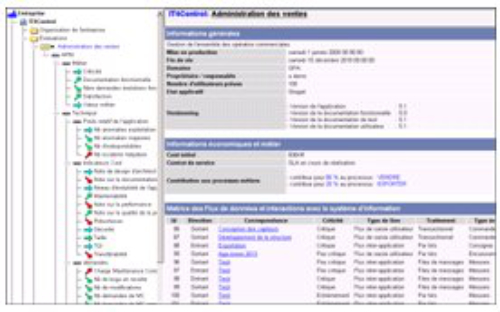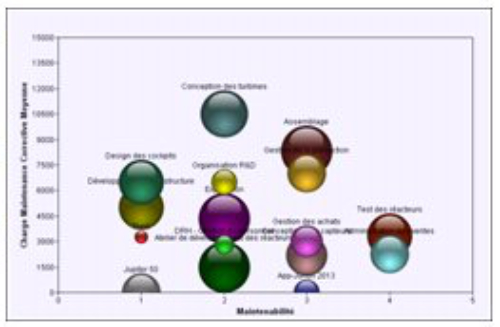
Lack of visibility on the application portfolio and the absence of reproducible management process cost the company money. 4APM® (For Application Portfolio Management) is the IT4© function you need to optimize Application Portfolio Management, eliminate useless costs, evaluate applications and attribute budgets to those that have priority.
IT4’s 4APM® integrates all the elements you need to pilot and streamline the application portfolio while increasing customer and business user satisfaction, reducing maintenance and operational costs, and controlling risk.
4APM® provides a true record of application health and an evaluation of applications as concerns needs. The final goal of Application Portfolio Management is to provide focus on value creation, decisions that need to be made and impact on business lines through the business value of the application.
4APM® is designed for the IT department, IS managers, application and production managers and business units.


Align the application portfolio with business needs
4APM® integrates and calculates the notion of application business value. Business value is then integrated in feedback to facilitate decisions on application portfolio management. Business value can be updated regularly and completed with user surveys or with financial, technical or competence-related indicators. Next, this information is integrated into performance indicators that can be shared by all IS participants, whether IT professionals (IT department, Planning and Design, operations, etc.) or not (business units, cost control, etc.). Different types of report allow comparing applications according to various criteria, benchmarking them, discovering those with the least value creation, the most expensive ones, etc.
Dynamic evaluation of applications according to their business, financial and technological value and Collaborative tool for the IT department and business units that compares applications to business needs.
Obtain better visibility for deciding on evolution
4APM® includes the necessary functions to provide an overall view of the application portfolio, as well as of its components, applications or parts of the application chain. These functionalities are the following:
- Application reference: technical, business, urbanization, financial, associated competence
- Application files, “ID card” for each application
- Application lifecycle management
- Application mapping
- Integration of project components of the applications (upgrading, new functionalities, etc.) using the 4PPM® module or by connecting to third-party solutions
- Integration of upgrade requests and incidents using the 4DRM® module or by connecting to third-party solutions
- Taking into account application quality in terms of performance and availability
- Monitoring of indicators that provide application and application portfolio health status, most notably the number of operating points, maintainability, risk level, etc., through collection of information from CAST Software solutions by Application Intelligence or from other market solutions
- Specific or on-demand feedback and contributions with these tools, the company obtains the following benefits:
- Improved management of obsolescence
- Assistance for defining actions necessary for realignment with company standards
- Measurement of the impact of planned migrations and upgrades
- Assistance for defining budgets and reinforcing cost control
With these tools, the company obtains the following benefits:
- Improved management of obsolescence
- Assistance for defining actions necessary for realignment with company standards
- Measurement of the impact of planned migrations and upgrades
- Assistance for defining budgets and reinforcing cost control
4APM® allows slashing management costs by 10 to 30% and reducing the resources necessary for application operation
Return on investment is attained by industrializing the application portfolio management process, by eliminating studies and inventories that are no longer necessary, and by providing access to decision-making criteria for stopping, transforming or replacing an application.
Return on investment is both qualitative – re-assignment of investments to strategic projects – and quantitative – lowering of application maintenance budgets with a target reduction from 10 to 30%.
4APM® for SI urbanisation
Business process contribution
Example of indicators for piloting Third-Party Application Maintenance or TMA
4APM® includes indicators for piloting TMA. Means of providing data feed can be implemented so that TMA suppliers are able to provide the company with the indicators needed to validate that service is in conformity with the expected level.
- Volumetric indicators, such as the number of blocking MC requests
- Indicators of fulfilled commitments, for example respect of deadlines for validating blocking MCs with respect to the SLA
- Quality indicators, like the number of validation refusals
- Productivity indicators, etc.
